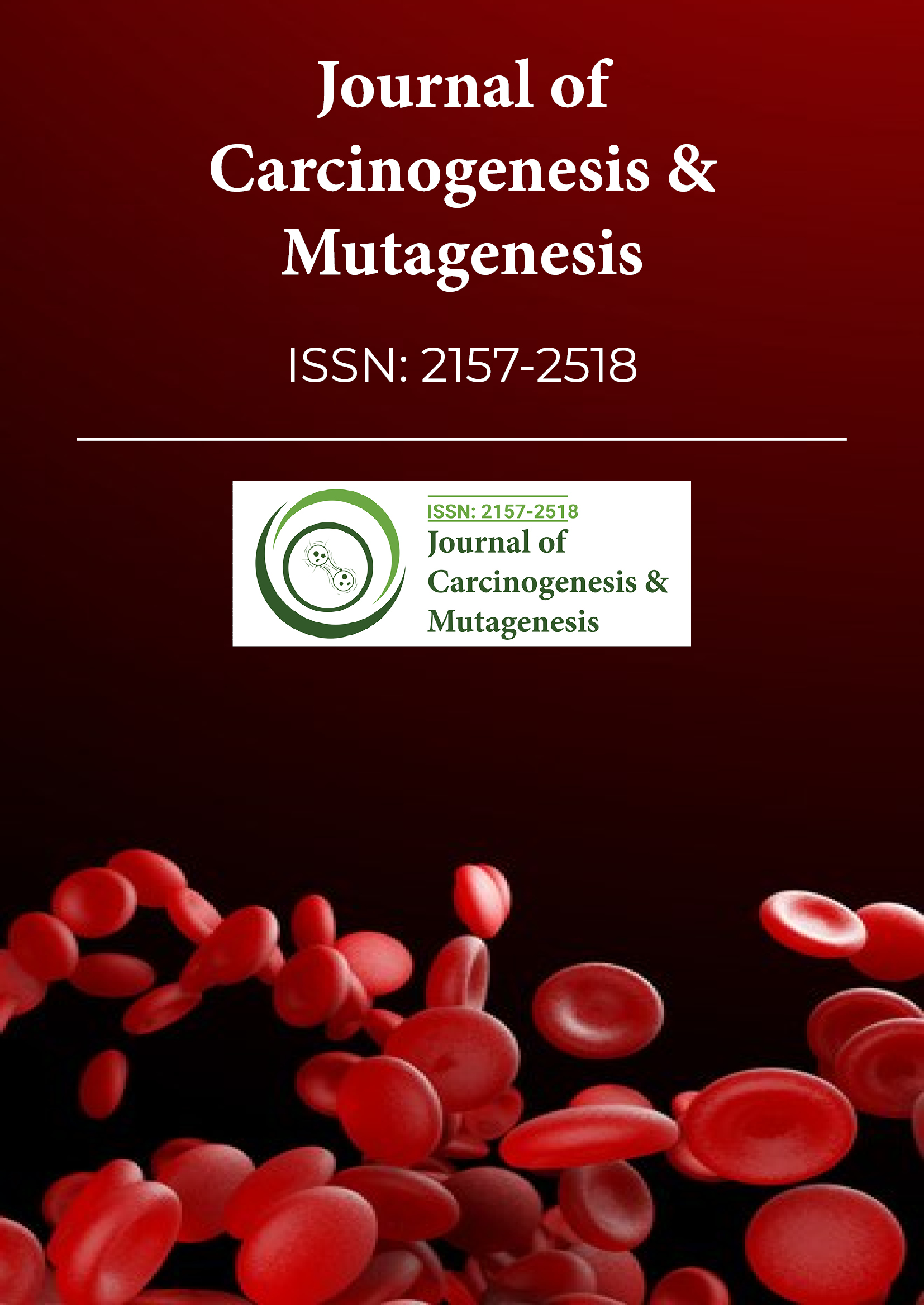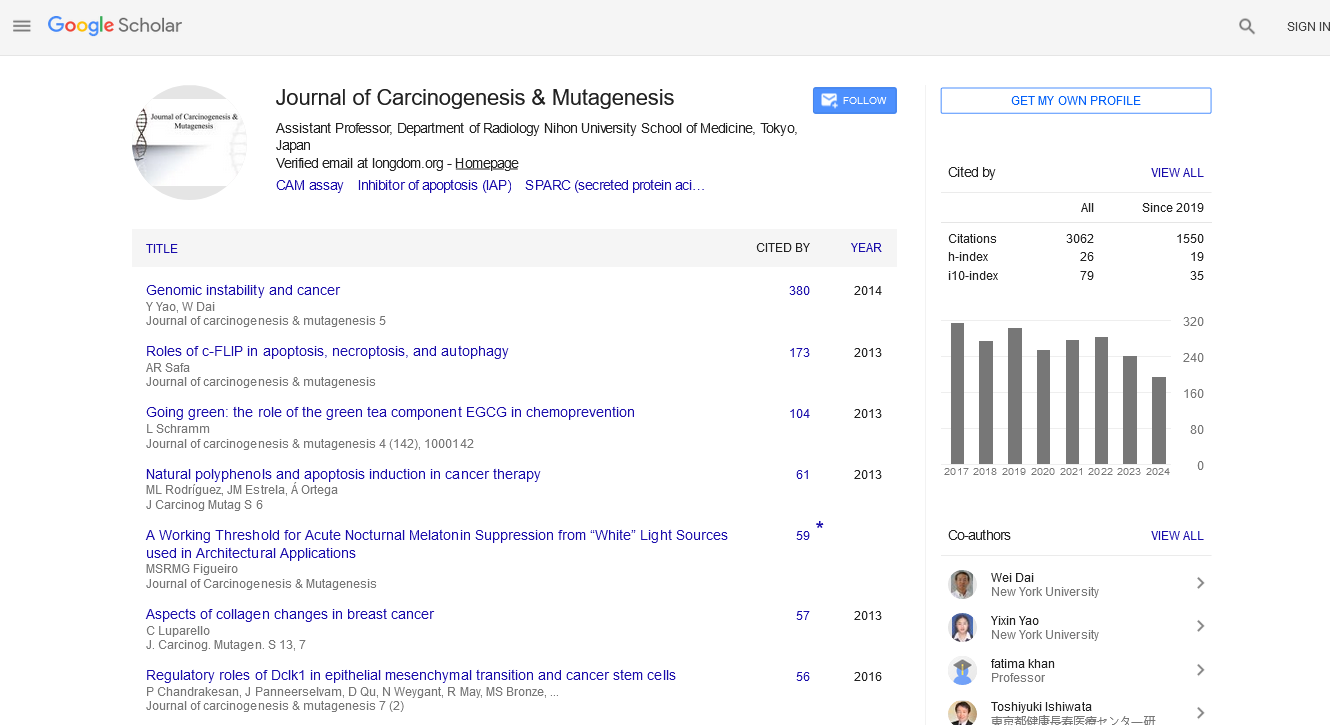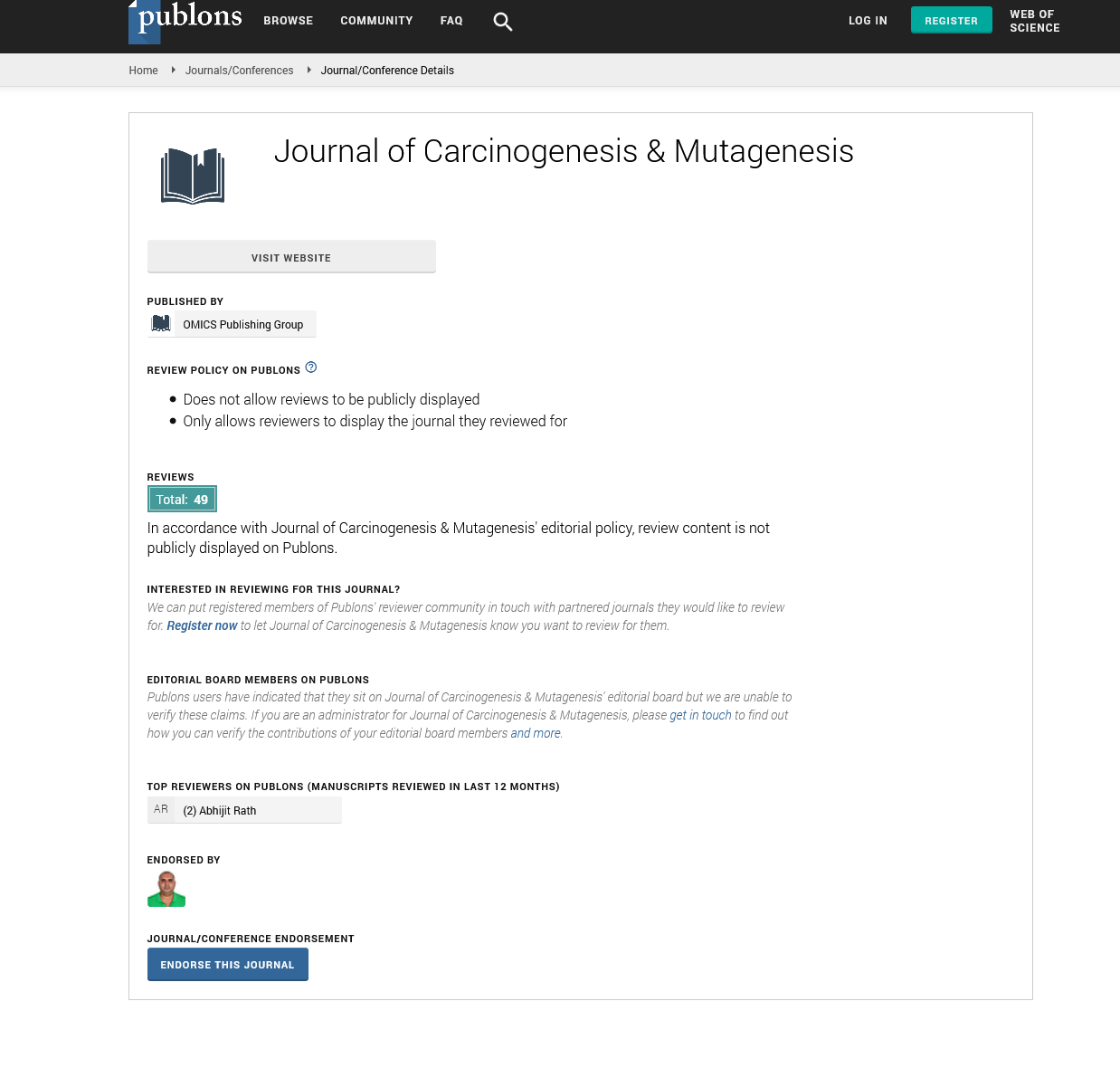Indexed In
- Open J Gate
- Genamics JournalSeek
- JournalTOCs
- Ulrich's Periodicals Directory
- RefSeek
- Hamdard University
- EBSCO A-Z
- OCLC- WorldCat
- Publons
- Geneva Foundation for Medical Education and Research
- Euro Pub
- Google Scholar
Useful Links
Share This Page
Journal Flyer

Open Access Journals
- Agri and Aquaculture
- Biochemistry
- Bioinformatics & Systems Biology
- Business & Management
- Chemistry
- Clinical Sciences
- Engineering
- Food & Nutrition
- General Science
- Genetics & Molecular Biology
- Immunology & Microbiology
- Medical Sciences
- Neuroscience & Psychology
- Nursing & Health Care
- Pharmaceutical Sciences
Opinion Article - (2025) Volume 0, Issue 0
Understanding the Immune Landscape and Immunomodulation in Hepatocellular Carcinoma for Enhanced Therapy
Patel Bhamini*Received: 22-Jan-2025, Manuscript No. JCM-25-28727; Editor assigned: 24-Jan-2025, Pre QC No. JCM-25-28727 (PQ); Reviewed: 31-Jan-2025, QC No. JCM-25-28727; Revised: 07-Feb-2025, Manuscript No. JCM-25-28727 (R); Published: 21-Feb-2025, DOI: 10.35248/2157-2518.25.16.005
Description
Hepatocellular Carcinoma (HCC) remains a leading cause of cancer-related mortality worldwide, with its clinical management often complicated by the heterogeneous nature of the disease. Current treatments for advanced liver cancer, including systemic therapies, have shown limited potency due to the complex and variable Tumor Microenvironment (TME). This complexity arises from multiple factors, including context-dependent inflammatory responses, the genetic variability of cancer cells, and the dynamic role of immune cells within the liver. In particular, the liverresident macrophages, including Kupffer Cells (KCs), as well as TREM2+ and SPP1+ macrophages, play a crucial role in the progression of liver diseases and hepatocarcinogenesis. Understanding the evolutionary dynamics of the immune landscape in the liver and identifying potential immunomodulatory strategies could offer new avenues for improving HCC treatment outcomes. This review aims to explore the mechanisms of immune modulation in HCC and discuss how targeting specific immune cells and pathways could enhance therapeutic efficacy.
Hepatocellular carcinoma arises primarily in the context of chronic liver diseases, such as Viral Hepatitis (e.g., HBV and HCV), Alcohol-Related Liver Disease (ALD), and Non-Alcoholic Fatty Liver Disease (NAFLD), with the latter often progressing to Metabolic Dysfunction-Associated Steatohepatitis (MASH). These etiologies share a common feature: persistent inflammation within the liver, which creates a permissive microenvironment for tumorigenesis. This inflammation promotes a series of genetic alterations, epigenetic changes, and immune system dysregulation that collectively contribute to the initiation and progression of HCC.
The liver TME is unique in its complexity, influenced by both the chronic damage caused by liver diseases and the adaptive immune responses that develop in response. The liver’s immune system includes a diverse array of resident immune cells, including macrophages, dendritic cells, and Natural Killer (NK) cells. Among these, Kupffer Cells (KCs)-the liver-resident macrophages are pivotal in maintaining liver homeostasis and initiating inflammatory responses. However, in the context of liver disease and tumorigenesis, these cells undergo a functional shift that may exacerbate disease progression and support cancer development.
Conclusion
The immune landscape of hepatocellular carcinoma is complex and dynamic, with macrophages—particularly Kupffer cells, TREM2+, and SPP1+ macrophages-playing a central role in the progression of liver disease and hepatocarcinogenesis. Understanding the evolutionary dynamics of these immune cells offers valuable insights into potential therapeutic strategies aimed at modulating the immune response in HCC. By targeting specific macrophage subsets, immune checkpoints, and key cytokines, it may be possible to develop more effective treatments for patients with advanced liver cancer. However, further research is needed to refine these immunomodulatory strategies and identify biomarkers that can guide treatment decisions.
Citation: Bhamini P (2025) Understanding the Immune Landscape and Immunomodulation in Hepatocellular Carcinoma for Enhanced Therapy. J Carcinog Mutagen. S48:005
Copyright: ©2025 Bhamini P. This is an open-access article distributed under the terms of the Creative Commons Attribution License, which permits unrestricted use, distribution and reproduction in any medium, provided the original author and source are credited


